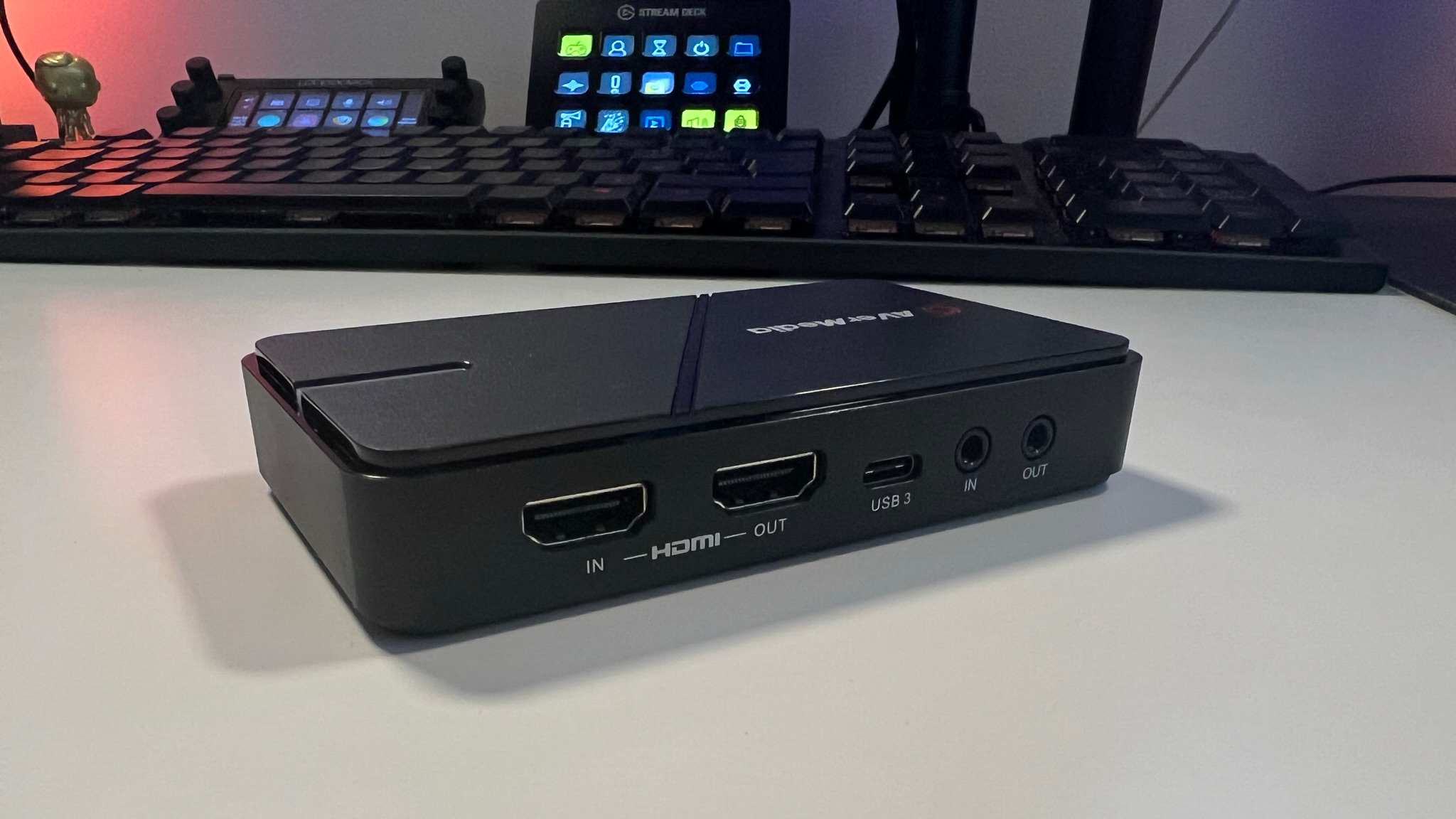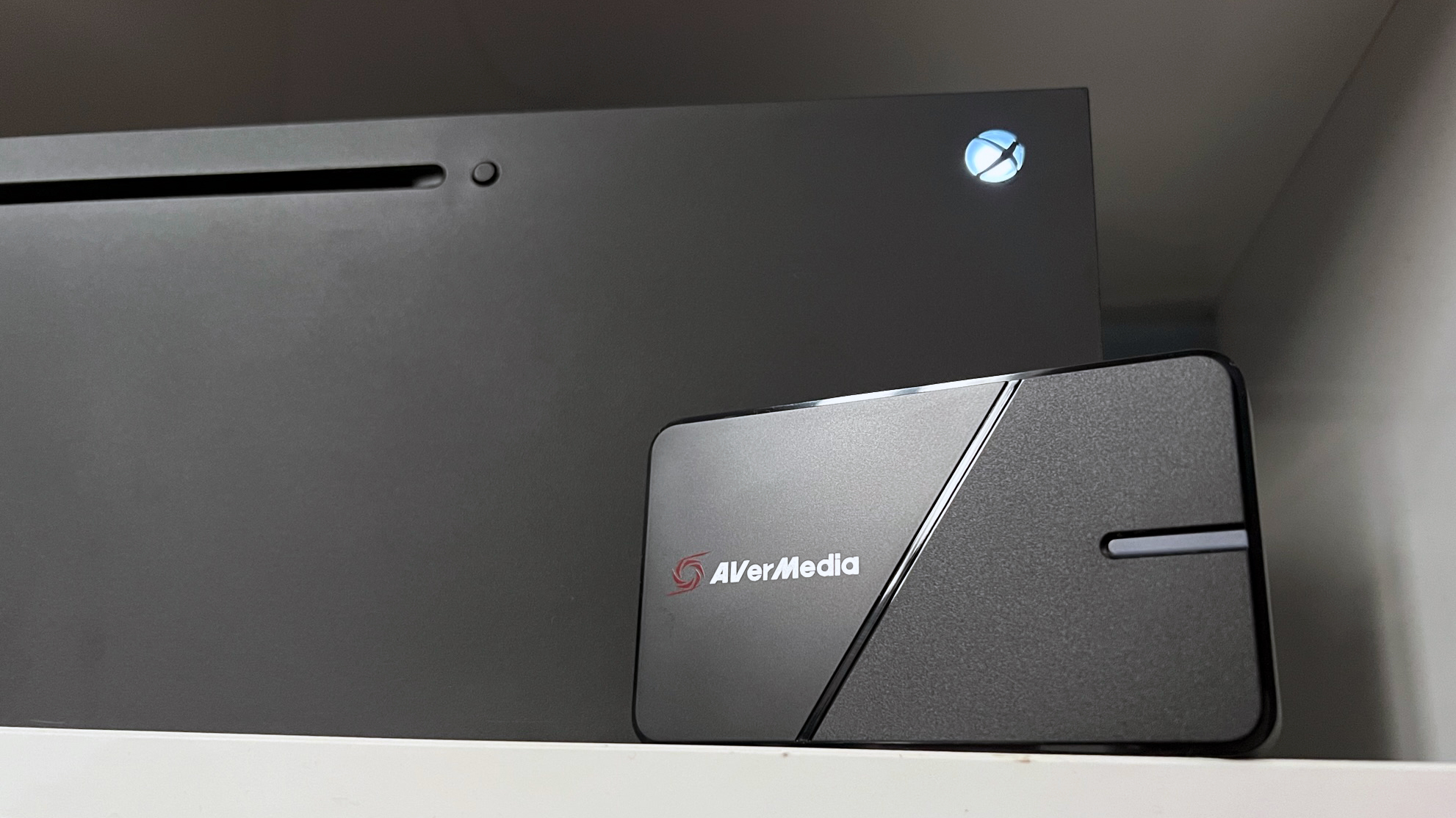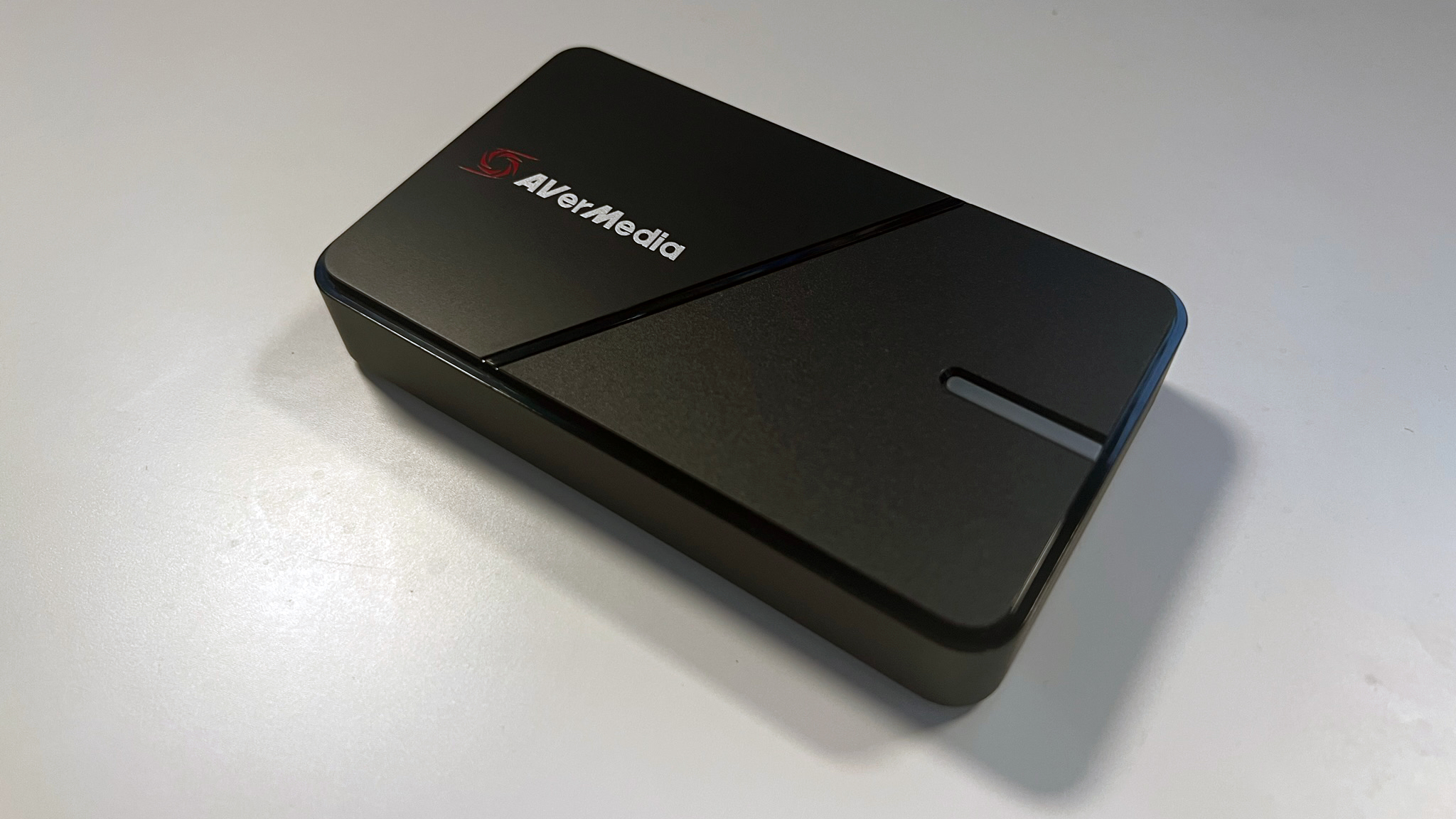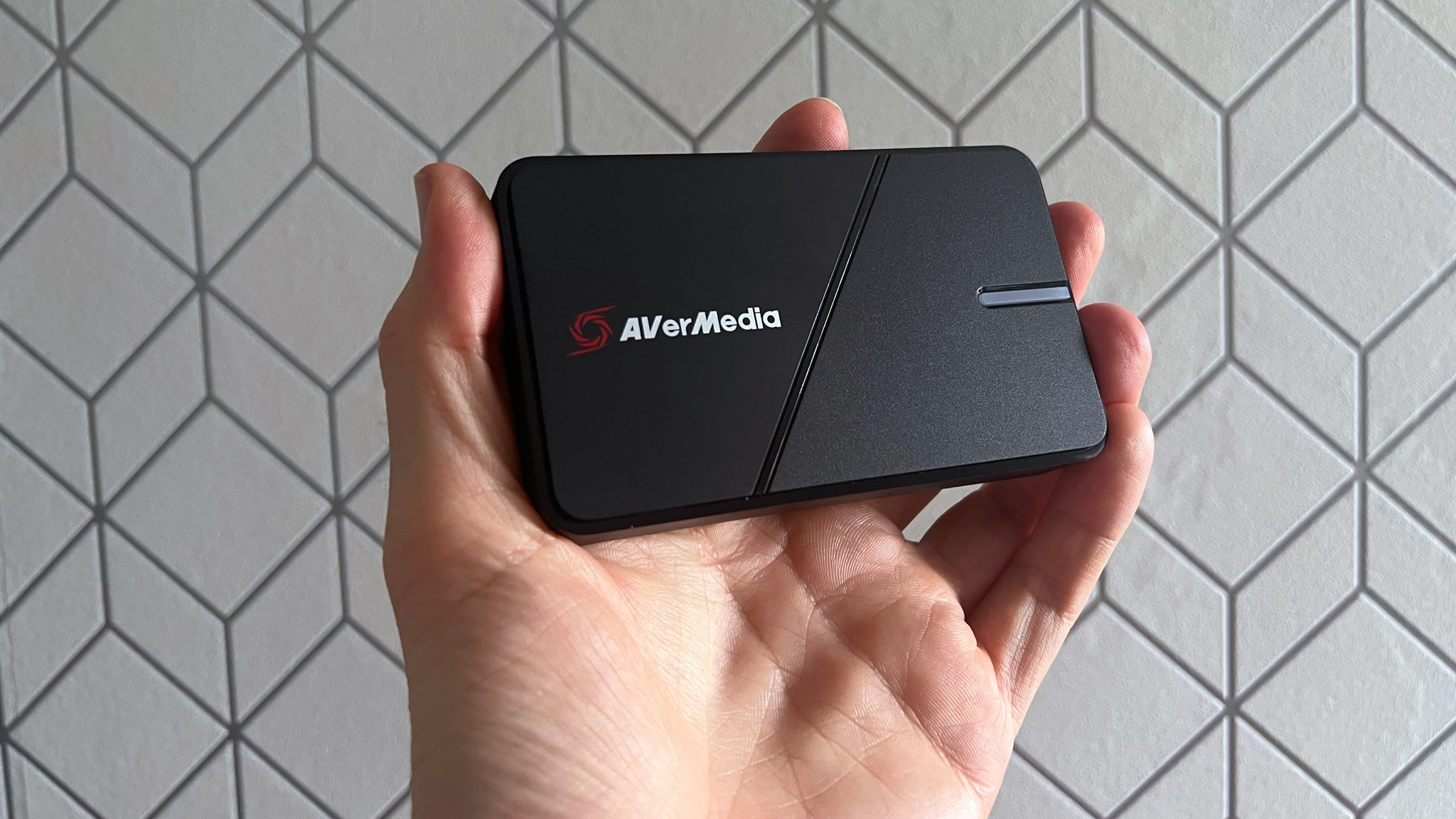GamesRadar+ Verdict
The AverMedia Live Gamer Extreme 3 is a solid capture option but has some noticeable top-end limitations.
Pros
- +
Simple Plug and Play Option
- +
Cheaper than others and good value
- +
Variable refresh rate support
Cons
- -
Struggles at high resolutions
- -
No HDR capture
Why you can trust GamesRadar+
A familiar brand in the world of streaming for gamers and game capture, AverMedia is back with its latest plug-and-play capture card, the Live Gamer Extreme 3. A quick reply to the Elgato HD60 X released earlier this year, the Live Gamer Extreme 3 becomes the second in the market to offer gamers variable refresh rate support.
Headlined by 4K30 capture with 4K60 HDR passthrough, the spec sheet makes the Live Gamer Extreme 3 a pretty attractive option for console gamers. It’s an eye-catching price point too, at $169.99/£159.99 it’s nearly 20% cheaper than the Elgato HD60 X and could shape up to give that card a serious competitor.
Design & features
It’s safe to say that AverMedia has a bit of experience when it comes to making the best capture cards. The snappily named AverMedia GC551G2 Live Gamer Extreme 3 is the eighteenth capture card in its range, which probably explains the need for the lengthy product title.
As you’d expect from a plug-and-play USB capture card it’s a relatively non-descript black plastic box. It’s not the most premium feeling device; it’s a little light and hollow, and handling the Elgato HD60 X feels much more like you've got a near-$200 item in your hands.
Across the back of the card you’ll find HDMI in, HDMI out passthrough, USB-C for outputting to PC, and two 3.5mm connectors for feeding audio in and out. A capture card like this is likely to be pretty 'set and forget' for most gamers so having all connections tucked away on the same side makes neat cable management achievable in a pretty small footprint.
AverMedia has made one misstep though that I found incredibly annoying during testing. Along the top of the card is a status LED, it’s about an inch long and it’s simply obnoxious. When the Live Gamer Extreme 3 is powered and receiving an HDMI signal the LED sits as a stable blue beam which, I’ll admit, actually is in keeping with the little bit of design work on top of the card. Turn your console off though and that status light is going to angrily flash red at you until you yank out the USB cable to kill the power supply. It’s a redundant, annoying blemish that just doesn’t need to be there - there’s now a strip of black electrical tape over mine.

Performance
I got off to a rocky start with the GC551G2. Plugging it in for the first time wreaked havoc with my other USB devices which all panicked and then reconnected with varying degrees of success. My troubles continued for around a week too with the Live Gamer Extreme 3 continually preventing Windows from booting if it was connected before powering on. It seemed to settle in and the issues faded in time, and, of course, this issue could be on my PC side rather than the card itself, but I had no similar blips when using the Elgato HD60 X.
Even when things were all playing nicely the Live Gamer Extreme 3 was a frustrating hit-and-miss experience. At the lower end of intensity, it performed reliably and admirably. Taking a 1080p signal from a Nintendo Switch the card was rock solid with no input lag and clean visuals. Even without using passthrough and playing via the OBS preview it replicated a normal TV experience well and I’ve got no complaints with what it output to stream.

Paired with an Xbox Series X, however, the Live Gamer Extreme 3 didn’t fare so well. At full 4K resolution, the card refused to let me use HDMI passthrough and capture at the same time, greeting me with an awfully unhelpful ‘Not Supported’ message in RECentral and OBS. After some settings and trial and error, I found my options were no passthrough to capture in 4K or to drop the Xbox to 1440p to get passthrough and a capture signal simultaneously. That’s certainly not ideal.
The passthrough signal looked great though, with zero noticeable latency I could comfortably game without considering there was an encoder in the middle. The variable refresh rate support works well and I noticed no artefacts or screen tearing while gaming. The same was true playing off the preview in RECentral and OBS, though trying to record 4K30fps via my Surface Laptop 3 caused massive input lag and AV sync problems. That likely says more about my machine than the card itself, but it’s a point to note for streamers looking for a solution without a gaming PC.
The Live Gamer Extreme 3 supports HDR in passthrough, however it can only capture in SDR and the tone mapping on offer was underwhelming. Colours became washed out and everything felt overly bright and lacking in detail. I resorted to turning off HDR in the Xbox system settings and that did improve things.

Overall - Should you buy the AverMedia Live Gamer Extreme 3?
The AverMedia Live Gamer Extreme 3 promises a lot at first but falls down in a few key areas that keep it behind the game. Ultimately whether the Live Gamer Extreme 3 is a better choice than other market leaders like the Elgato HD60 X will come down to intended use.
While it’s a strong set-and-forget option for simpler sources like 1080p gaming from a Nintendo Switch, issues with higher resolutions make it hard to recommend for new-gen gaming.
How we tested the AverMedia Live Gamer Extreme 3
I road-tested the AverMedia Live Gamer Extreme 3 across a number of common scenarios for creators and streamers. I connected it to both my desktop gaming PC (running an Intel i7-12700K and RTX 3070) and a Surface Laptop 3, in both cases using AverMedia’s supplied USB and HDMI cables.
Throughout testing, I captured content with both OBS and AverMedia RECentral 4. I sampled various resolutions and frame rates in Far Cry 6 and F1 2022 on an Xbox Series X, and Mario Kart 8 Deluxe via a docked Nintendo Switch.
You can read more about our approach to gaming tech and products in the full GamesRadar+ Hardware Policy.
Complete your streaming setup with one of the best microphones for streaming and the best webcams.
Alex is a streamer who has been creating gaming content for over a decade, streaming on Twitch regularly across the last five years. With a degree in film and a background in sports media, you'll find him jumping between 60,000 seat stadiums and his Animal Crossing island (where he's growing pears, in case you were wondering).




